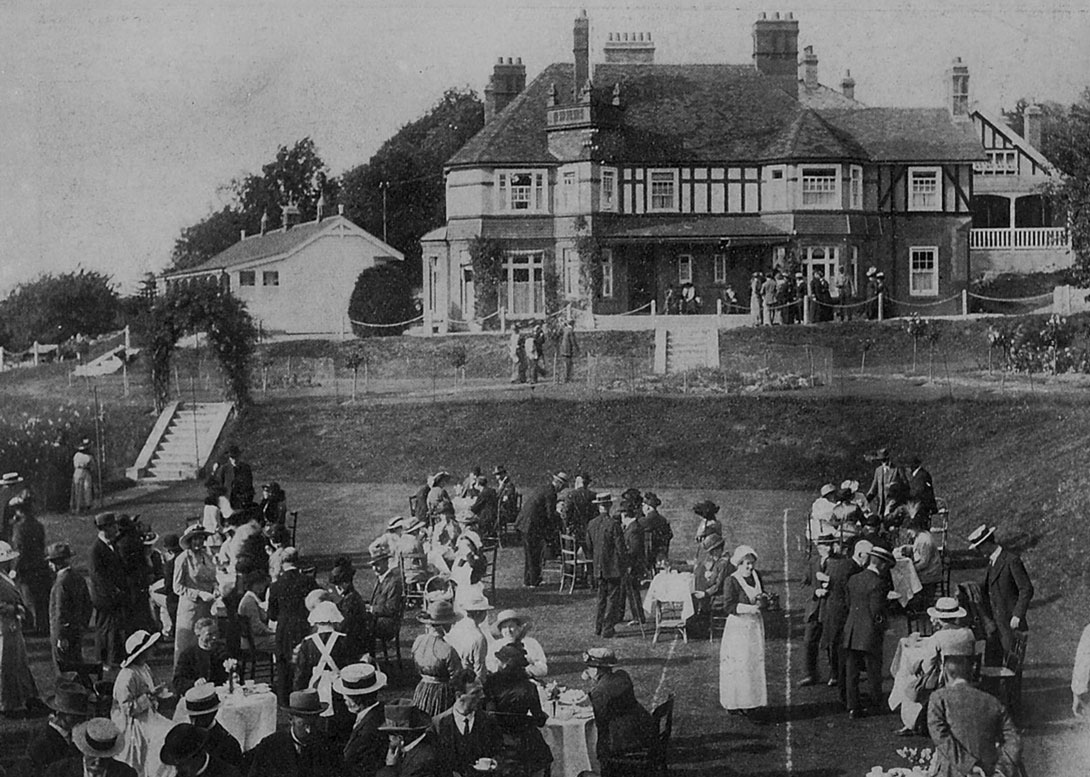 |
The opening of Worcestershire's "King Edward Memorial" - The Enlarged Sanatorium at Knightwick, on Saturday, July 24th, 1915. The Sanatorium at Knightwick was opened in November 1902 as a hospital for those suffering from Tuberculosis, MTB, or TB (short for tubercle bacillus), in the past also called phthisis, phthisis pulmonalis, or consumption. Its original name was King Edwards VII Sanatorium. In circa 1960 Knightwick Sanatorium closed and was later sold and turned in to places for people with out homes to stay. Since that time new housing has been built there and it is now a small private housing estate. The Sanatorium was situated half way up Ankerdine Hill and was originally thought to have good air, which those suffering from TB needed. Today we are lucky to have vaccines for TB but as we know it is still rife through out the world and today because of freedom of movement we are having people from countries where it still exists sometimes bringing this sometimes fatal disease in to the country. It is also a problem with cattle in this country and farmers are worried that badgers are the carriers that are passing it on. I used to deliver the Sunday papers around Knightwick and Whitbourne and the Sanitorium which had by then been named the Sunningdale Estate by its new owner was one of the places I delivered them.Photo: Berrow's Worcester Journal (Gratis) of - Saturday, July 24th, 1915.
Worcester News 22nd November 2002
The Journal of November 1902 carried a lengthy account of the ceremony where Countess Beauchamp of Madresfield Court, Malvern, opened what was then one of the first sanatoria in Britain for the treatment of TB sufferers. It was seen as a desperately needed facility in the uphill battle against the scourge of tuberculosis which had claimed the lives of no fewer than 3,000 men, women and children in Worcestershire alone during the previous 10 years.The Journal of 1902 explained how the Knightwick Sanatorium had become a reality. Mr J. Dangerfield had "generously leased the substantial house and extensive grounds at Knightwick to the Sanatorium Committee at a purely nominal rent of £1 a year," while Dr Dixey of Malvern had spearheaded a fund-raising campaign to meet the £2,400 cost of building two wings and shelters for TB patients. John Corbett, the famous Droitwich "Salt King" had given £1,000 towards this fund.
The Journal had this description of the new sanatorium: "Its situation at a height of 300 feet above sea level and above the fog line is considered by medical men to be ideal for the purpose. The grounds give a most pleasant prospect of the Teme Valley to such as may be in a state of health to need treatment there.
"Along the front of each of the bedroom shelters is a spacious verandah where the patients may recline throughout, enjoying the benefits of a maximum amount of sunshine and the crystal clear air. Dr Parkinson has been installed as resident medical officer, and ••Miss Hope as matron."
The sanatorium became a 100-bed unit and was to be involved in the development of new treatments for TB.
Berrow's Journal for this week of 1952 reported the Golden Jubilee of Knightwick Sanatorium and the celebrations laid on to mark the event but, as we know with the benefit of hindsight, it closed down in 1963 after giving six decades of sterling service in the effective fight to largely eradicate TB.________________________________________________________________________________________________________________________________________
The British Journal of Nursing [page 264] 1st October, 1904.
••Miss S. Balfour-Hope has been appointed Matron of the Sanatorium for Consumption at Threlkeld, Keswick. She was trained at the Western Infirmary, Glasgow, and was subsequently Matron and Nurse Superintendent at Eingussie Sanatorium, and Matron at the Worcestershire Sanatorium, Knightwick.
©peh

